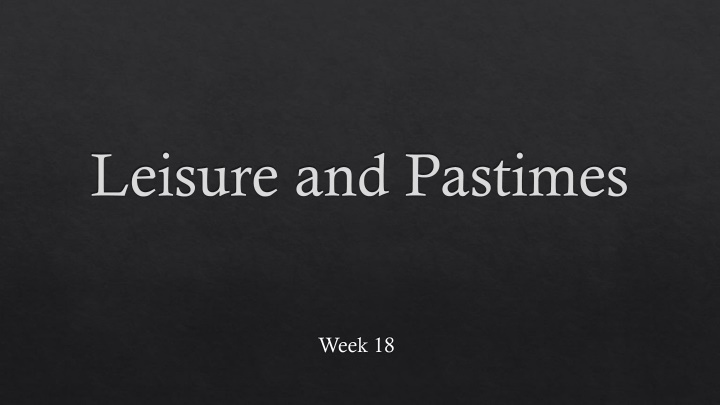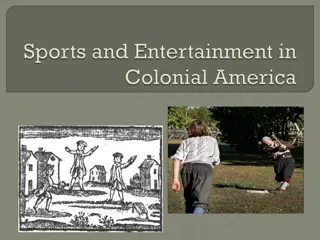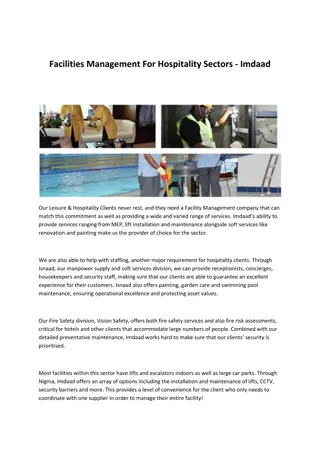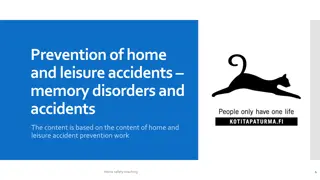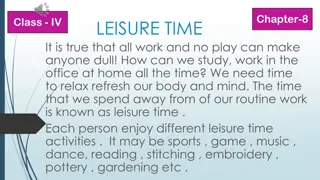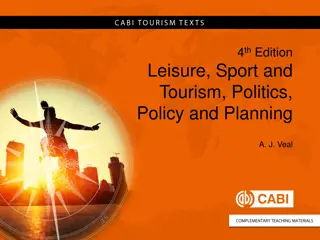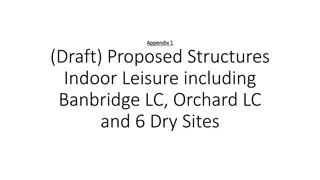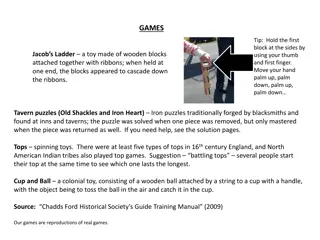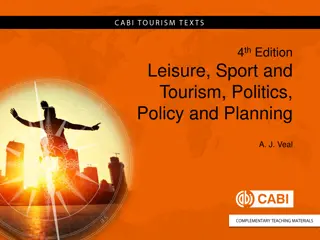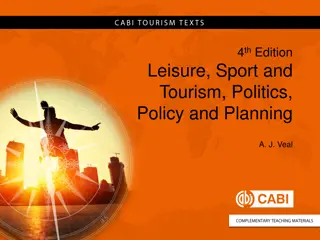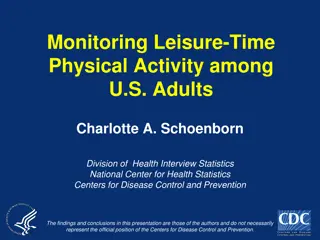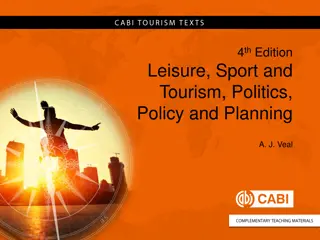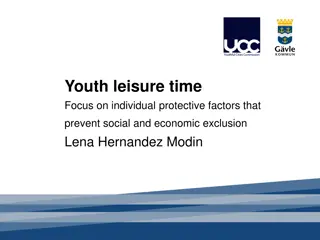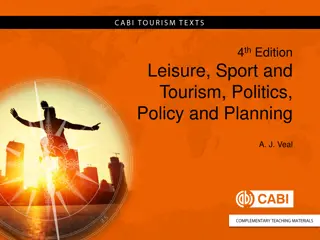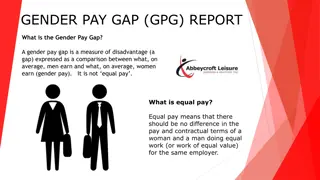Leisure and Pastimes
Industrialization and separation of home/work led to the emergence of the middle classes with disposable income, resulting in the growth of the leisure sector in Britain. Infrastructure and technology like railways connected town and countryside, while an increase in wealth and municipal governance enhanced civic pride and urban areas. The development of the leisure industry brought about ornate architecture, public spaces, and changing societal habits during the Victorian Era.
Download Presentation

Please find below an Image/Link to download the presentation.
The content on the website is provided AS IS for your information and personal use only. It may not be sold, licensed, or shared on other websites without obtaining consent from the author.If you encounter any issues during the download, it is possible that the publisher has removed the file from their server.
You are allowed to download the files provided on this website for personal or commercial use, subject to the condition that they are used lawfully. All files are the property of their respective owners.
The content on the website is provided AS IS for your information and personal use only. It may not be sold, licensed, or shared on other websites without obtaining consent from the author.
E N D
Presentation Transcript
Leisure and Pastimes Week 18
Overview Development of the leisure sector. Victorian Era Status Reinforcement Social Control Gender Divisions First World War: Out of the cage? Interwar: Beyond Great Gatsby.
1. The development of the leisure sector in Britain
The development of the leisure sector. Industrialisation and separation of home/work = free time e.g.1847 Factory Act. Increased standard of living and emergence of the middle classes = disposable income.
The development of the leisure sector. Infrastructure and technology e.g. railways facilitated day excursions, holidays, and connected countryside with town allowing shopping trips and rambling.
The development of the leisure sector. Increase in wealth and development of municipal governance led to increase in civic pride . (Horn, Pastime and Pleasures) 1875 Public Health Act gave Local Sanitary Authorities power to regulate conditions. Subsequent legislation such as the Public Libraries Act (1892) and the Housing Act (1909) also greatly improved urban areas.
Development of the leisure industry Resulted in ornate architecture and opening of many public spaces such as parks and museums. E.g. V&A, Natural History Museum, and Vauxhall Gardens Changing manners (e.g. eating in public) combined with a diminishing number of household servants led to habits such as frequenting restaurants. However, limitation in age, location, class etc .
Status Reinforcement Social insecurity combatted by culture and leisure activities. High brow/low brow distinction (music and literature esp.) Being seen to have spare time, being seen at fashionable locations promenading along the pier, balls, opera. Sociability networking, cementing status as pillar of community, furthering career ambitions or finding marriage partner.
Leisure as social control. Fears of social unrest and concerns of poor health of nation (post Boer War). Policing nation s morality against upper class corruption and working class ignorance led to regulation of leisure (Stephen Hall Clark). Campaigns against vice hit class extremes. Many people lived with employers who regulated leisure and personal lives. Even reading censored and monitored. (M. Beetham, Domestic Servants as Poachers of Print).
Separate spheres ideology Men s leisure pursuits often take place in public space. A form of homosocial bonding reinforcing geographical or occupational identity (football teams). Women s pursuits more home centred and often individual activities such as sewing, piano, painting, reading etc. Spouses often spent free time separately. Women entering pubs frowned upon while banned from clubs or working-men s institutes. Physical activities and especially those which took them into public realm ridiculed or disapproved of e.g. cycling.
1890s symbolic of new woman. Gave freedom and access to public sphere. Helped women leave behind restrictive clothing: Rational Dress Movement Kat Jungnickel, Bikes and Bloomers
First World War: out of the cage? Some women in work had disposable income and no one to dictate spending. Working in factories rather than service helped reduce employer control of free time. Factories helped women build team based leisure pursuits e.g. football teams. Women banned from ground in 1921 as soldiers returned, only lifted in 1971. (Tim Tate, Women's Football: The Secret History) Double burden limited pursuits.
Interwar: Beyond Gatsby Glamourous carefree age of jazz, drugs, flapper girls and liquor. Bright Young Thing limited to upper class in London. Reaction against sorrows of childhood in teens during war lost loved ones. Live for today mentality. Cultural idea more than physical event. Narrow period of time with sad ending for most BYT. Working classes and middle classes often missed out on the fun except for some developments in hair styles, fashion, musical tastes.
Conclusions 19thcentury a period when more people had time and income and could participate in leisure activities in ever increasing numbers. Class, geography and gender divides determined nature of leisure pursuits and pace of change. Leisure could be seen as transformative agent , changing culture of society especially in hands of middle classes. Leisure time dangerous as facilitates vice and difficult to control. Always danger of transgressing societal norm.
